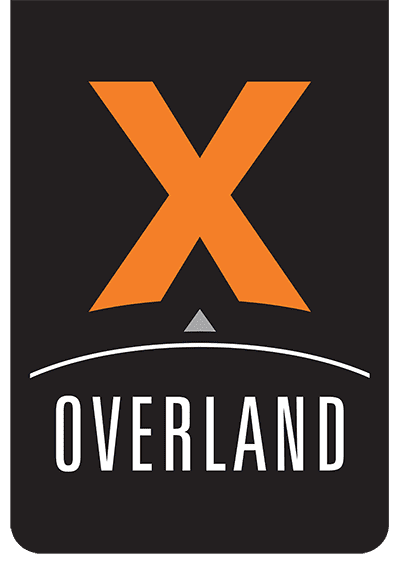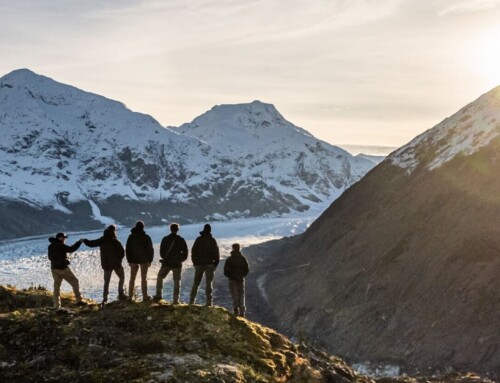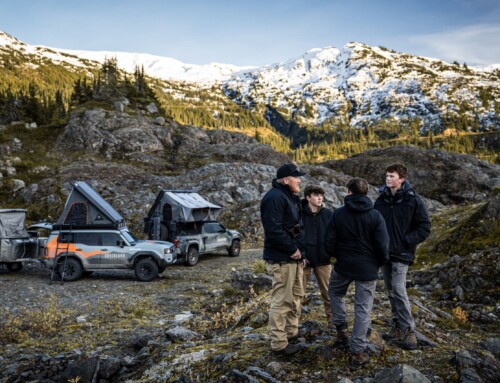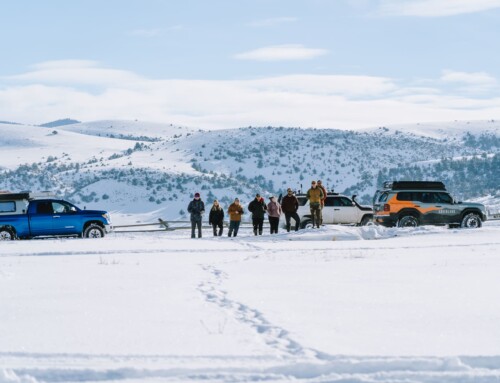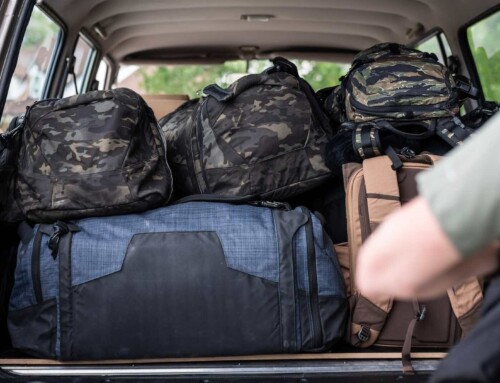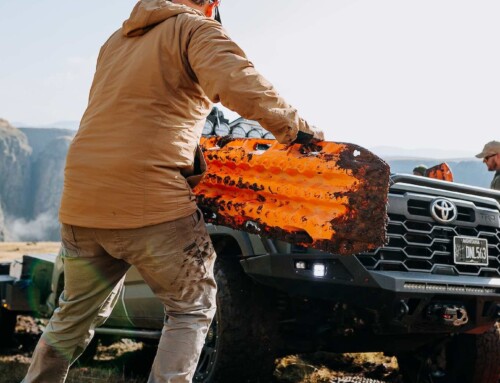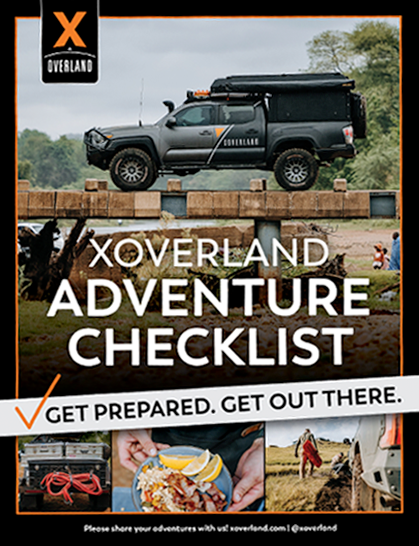You have an overland rig. You put a lot of thought into building it. (You may have even listened to our podcast on the subject or watched one of our many videos!) Now, you and your vehicle are equipped to adventure anywhere and everywhere.
But are you though? You may have a bomber set of tires and an upgraded suspension system, a RTT (Roof Top Tent) and a winch to pull you out of a bog–but what about your overland kitchen?
Also known as a “galley” (a term appropriated from mariners), the overland kitchen is the setup you have put together in your vehicle for all things cooking, eating, and drinking.
If you’re interested only in mere survival, a minimalist approach of a single-burner stove, a means of boiling water, a spork, and an Alubox full of freeze-dried meals will suffice for your traveling camp kitchen.
While such a setup may be appropriate for “bugging-out” or for a spartan hunting camp, a more conventional approach to an overland galley will allow you to more fully enjoy your overland eats, possibly even raising the bar to the level of a culinary experience! For more on what to cook while overlanding, check out our blog post, Camp Cooking Guide for Overland Travelers!
We are here to outline the pillars of a functional overland kitchen that will furnish you with everything you need to create the kind of cooking experiences that allow you to thrive while traveling to and through some of the beautiful and interesting places your journeys take you.
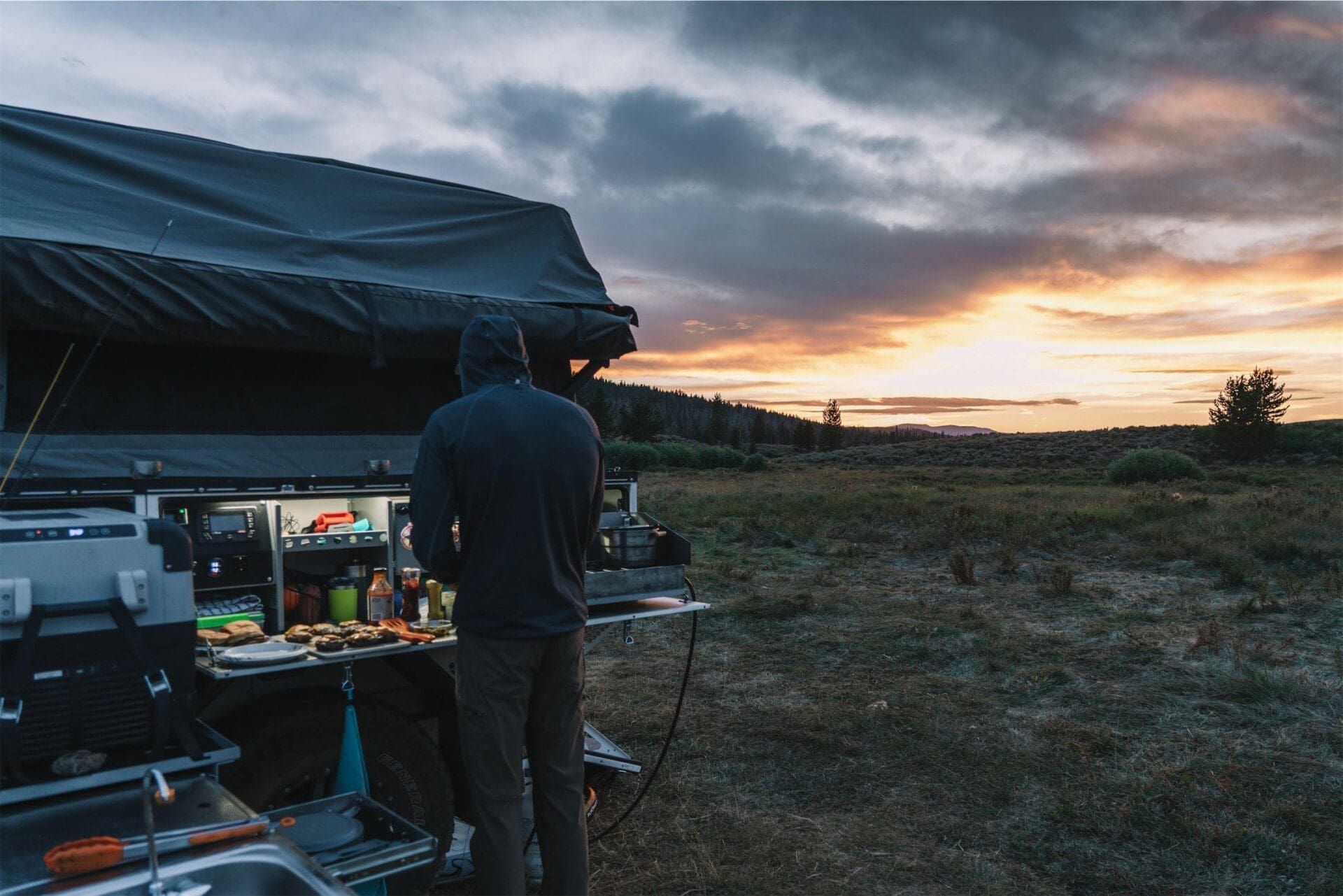
Heading out for a weekend in the mountains or an international overland journey?
Overlander or Weekend Adventurer?
Are you setting yourself up for weekend adventures or for overland travel? The answer to this question matters in that your interest determines the nature of your galley.
The good news is that if you intend to go overlanding–even if overlanding is a long range goal you have set for yourself–a vehicle set up with a fully-featured overland galley will be suitable not just for overlanding but also for weekend adventures, long distance four-wheel-drive touring, and a host of other outdoor activities like mountain biking trips, climbing forays, hunting, and fishing.
The difference is that when car-camping for the weekend, you can throw in a cooler, a large cook stove, a pile of firewood, and some paper plates and head out. Once arriving at the campground, you can spread out your ensemble, cook and hang out for a couple of days, then pack up and head home. Sometime later that week you can unpack your car and sort out the mess leftover from the weekend in your garage.
Overlanding is a different matter. If you are truly overlanding, you may be leaving a permanent home for several weeks, months, or even years. You will be traveling through different countries with changing availability of food and potable water. The adapters and fittings that work with the propane tanks sold in your country may not work in the next; and those that work in that country may not work in the neighboring countries, and so-on-and-so-forth.
Starting to get the idea?
Our goal is to prepare you to be well-equipped whether you’re heading out for the weekend, a weeklong tour, or an all-out overlanding adventure lasting many years and featuring as many countries. Let’s begin!
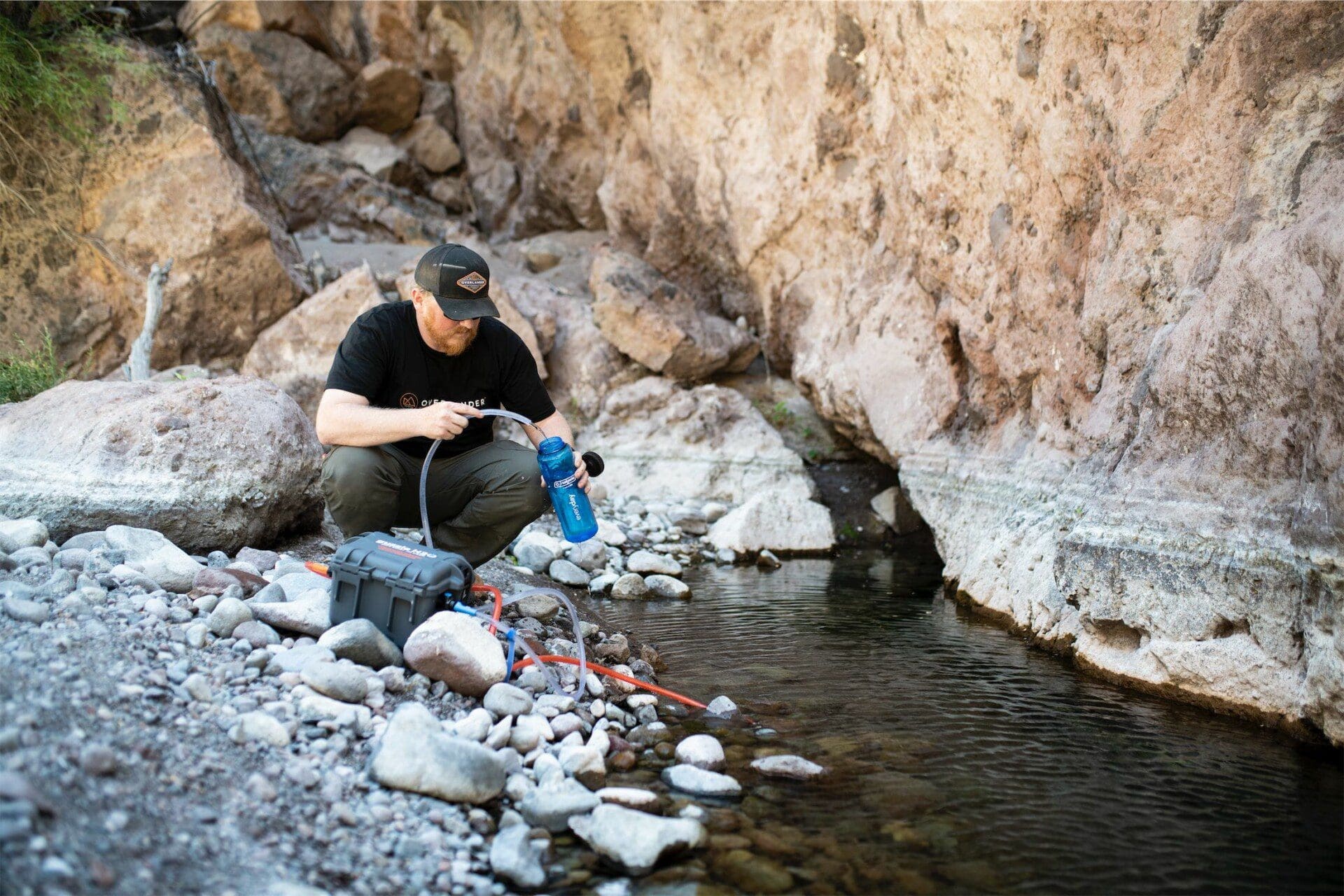
An ample supply of good-tasting potable water is essential to have in any overlander’s galley. We use Guzzle H2O for keeping bottles/tanks topped off!
Water Systems for Overland Cooking
An often overlooked item in setting up an overland galley is water. Every kitchen, whether at home or on the trail, needs an ample supply of high-quality potable water. I say “high-quality” because not all potable water tastes equal. For cooking purposes (like boiling pasta or brewing coffee) and for drinking, you will need good tasting water.
If you’re overlanding and plan on being in the field for long periods of time, you will also need a means of obtaining potable water such as a high-capacity purification system.
You will also need a means of storing water that is safe from sunlight and from leaks and destruction caused by driving bumpy roads.
Finally, you will need an effective means of dispensing water.
There are numerous water purification systems available. Make sure you choose a reputable brand known for its reliability and functionality. For safe water storage, we recommend these military-grade, five-gallon containers by Scepter. We have used these over the years with great success on our many expeditions from Alaska to South America.
Pro-Tip: Buy the blue Scepter jugs if available so that all will universally know that water is stored in them–not fuel!
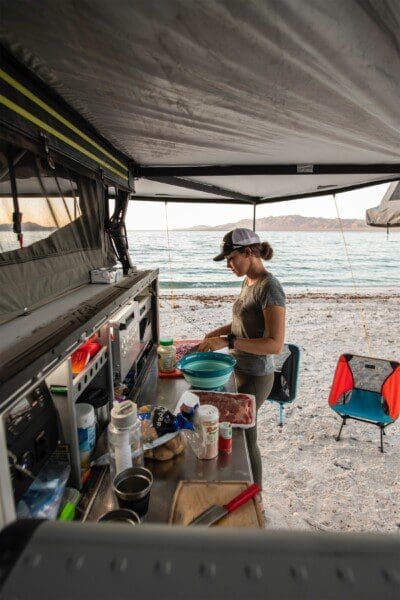
Whether in the heat of Baja or the chilly summers of Alaska, storing food properly is a must to enjoy meals like this one!
Food Storage for your Overland Galley
Now that you have an effective approach to meeting your water needs, it is time to address food storage. The first item to look at is the distinction between “cold” and “dry” storage.
Dry Storage: Where do I Store My Food?
Dry goods such as cereal and granola, coffee, bread, chips, nuts, dehydrated food, energy bars, cookies and others need to be stored separately from easily perishable food items that need to be kept cold. Storing dry goods properly ensures that they will not get damaged, invaded by insects, make a mess, or get lost in the shuffle of gear during the trip.
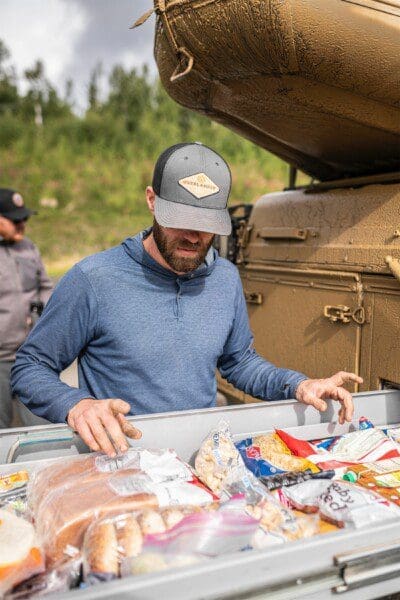
A clean, secure, water-tight environment for storing dry goods like this drawer on our Patriot X3 Camper ensures the cookies won’t be crushed when you arrive at camp!
Storing dry food items is a relatively easy task compared to storing perishable food items requiring cold storage. A simple Alubox or plastic bin will work. Consider that by investing in a well-built storage box, you will protect your food from getting crushed, wet, and bug-ridden. Also, such a storage box will likely hold up to a lifetime of rugged use.
Pro-Tip: Dedicate a specific container to the storage or your dry goods, label it and set it up for sustainable organization with dividers.
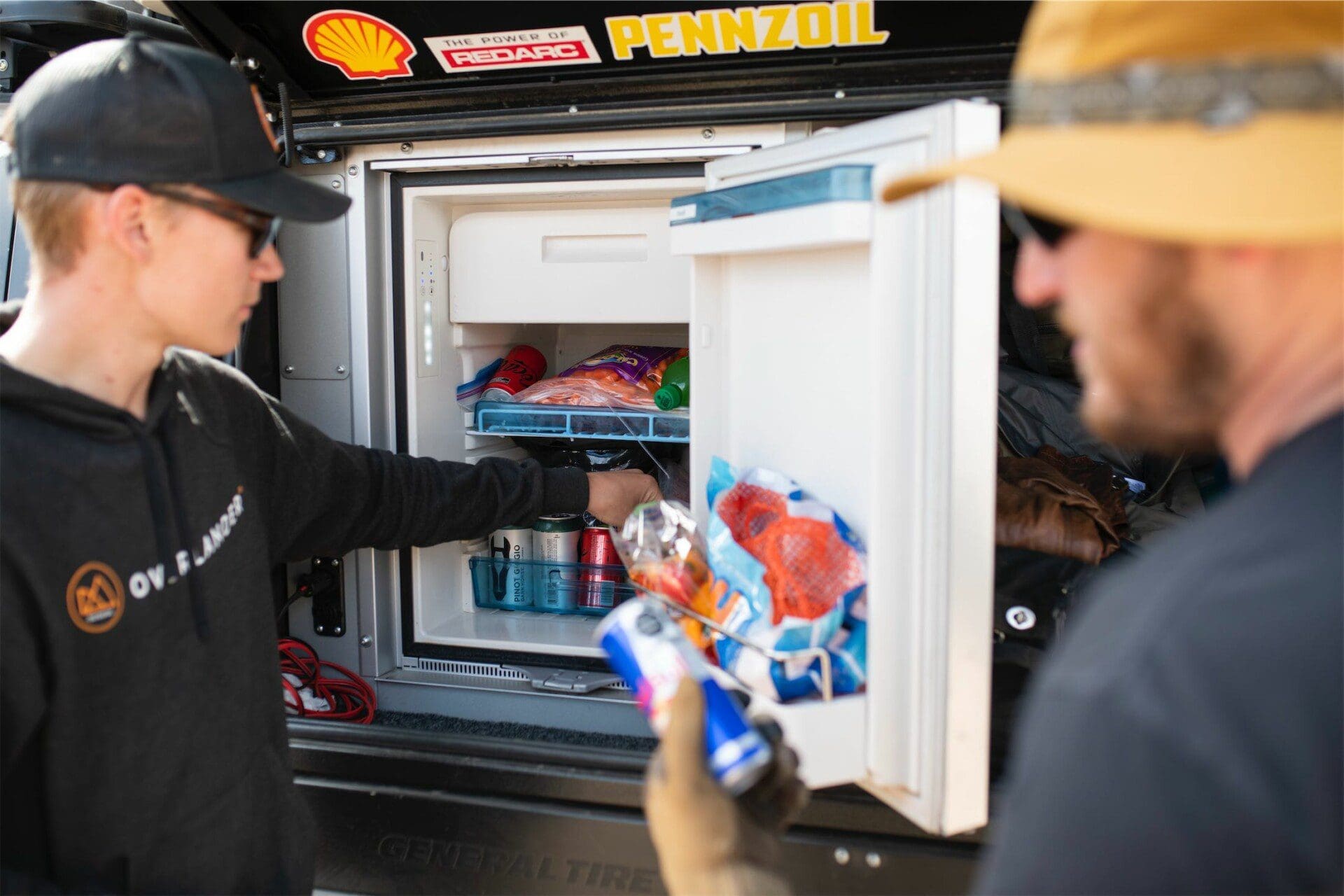
A functioning refrigerator is a real asset to an overland galley and makes for lots of good eats and cold beverages.
Cold Storage for Overlanding
Storing food that is easily perishable and needs to be kept cold is a much more complicated task than storing dry goods. This is why one can travel light and go far with a simple isobutane stove, freeze-dried meals, and water. But to our way of thinking, this is a last resort when systems fail or you’re deliberately going for minimalism.
Having fresh, perishable food on board means delicious camp meals that are the stuff of memories, the kind of meals that may wow a potential lover or that you may even share with a local guest who could provide you with keen insight about where to travel in the area.
For honest adventure travel, you must either invest in a high quality rotomolded cooler that is bear-tough and can preserve your food for days, or a permanently powered refrigerator capable of withstanding the rigors of overlanding. Given the price of rotomolded coolers and well-made freeze-packs, the refrigerator option, while more expensive, needs serious consideration.
Remember, however, that to power a refrigerator, you will need to install a system from which to draw and create power, so your expense will go well beyond the fridge. Typically, an overland refrigeration system has an auxiliary battery, a solar panel, and charge controller of some kind.
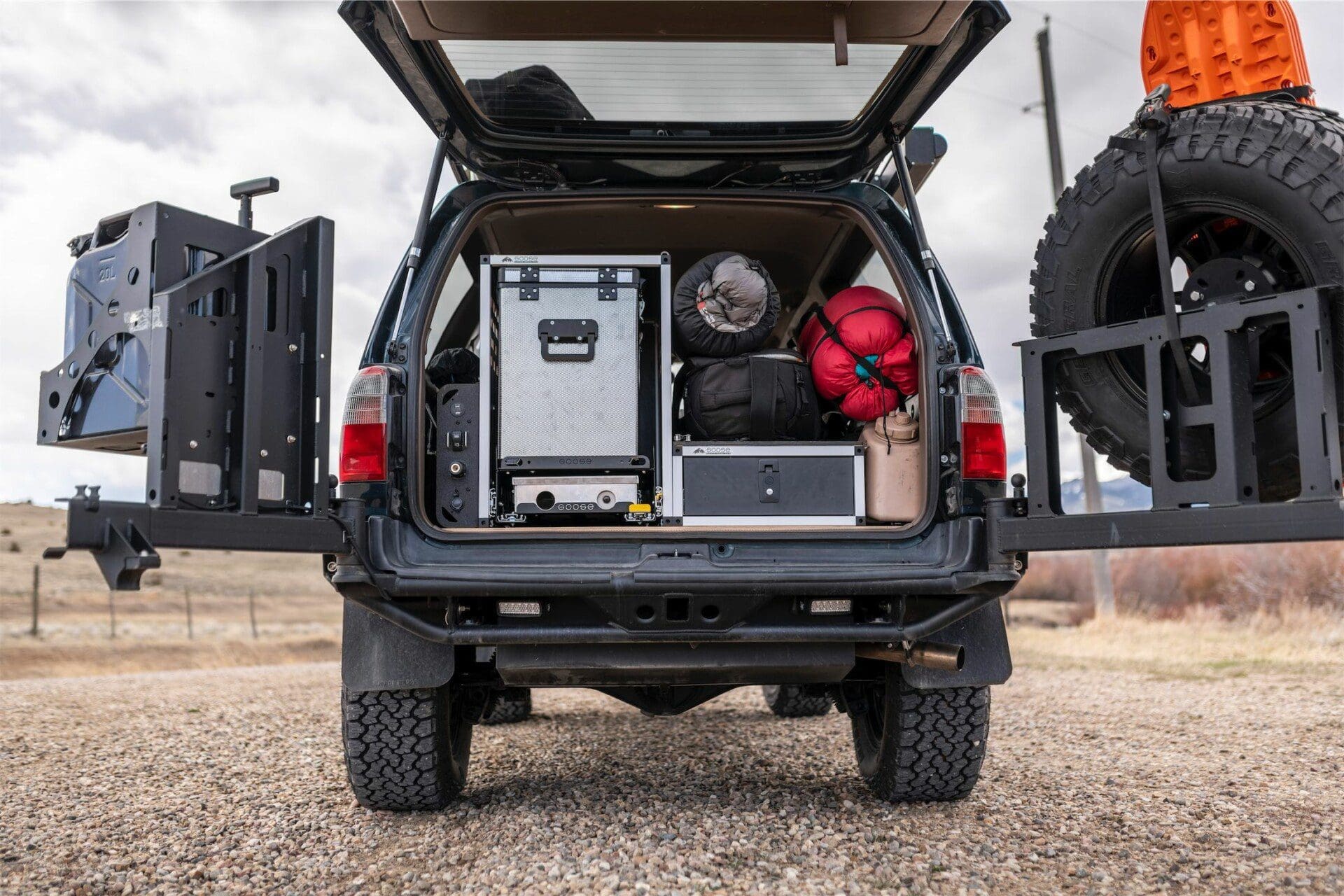
Our 3rd Gen 4Runner featured here sports a slide-out galley system from Goose Gear complete with a National Luna Refrigerator and a Cook Partner 2-Burner Stove.
Refrigerators and Coolers–Pros and Cons
Cooler
Pros
- Less expensive than a refrigerator
- Portability: In the boat one weekend; your adventure vehicle the next
- Some are certifiably “bear-resistant” and can be padlocked shut.
- Extremely rugged and long-lasting
Cons
- They require ice! (While easy to find in the U.S., while abroad, ice can be extremely difficult to come by and the cost will add up.)
- The ice or freeze-pack you use to keep them cold takes up valuable space, making less room for food.
- They are heavy and cumbersome to pack along
Refrigerator
Pros
- As long as they have a proper power source, fridges can run as long as you need them too.
- Spatial optimization due to there being no need for freeze-packs/ice.
- Most have actual freezer areas for keeping goods frozen (like cocktail ice!).
- They are compatible with many overlanding galley systems that come equipped for powered fridges.
Cons
- Requires a more substantial financial investment
- Requires more accessorizing for full functionality
In short, for weekend outings, a cooler is fine. One can even overland around the world with a cooler. However, we believe that if you intend to do extended trips and overlanding is in your present or future, a powered refrigeration system for your galley is well worth the investment.
Pro-Tip: Whether using a cooler or a refrigerator, pre-chill before heading out on your trip. If you can, stock with food ahead of time and pre-chill both your food and fridge with shore power before departure. That will make your system hold cool temperatures much more efficiently. For additional cooling, you can also pre-freeze meats and other food items you plan on eating well into your trip. If using a cooler, put a freeze-pack in the cooler the night before departure.
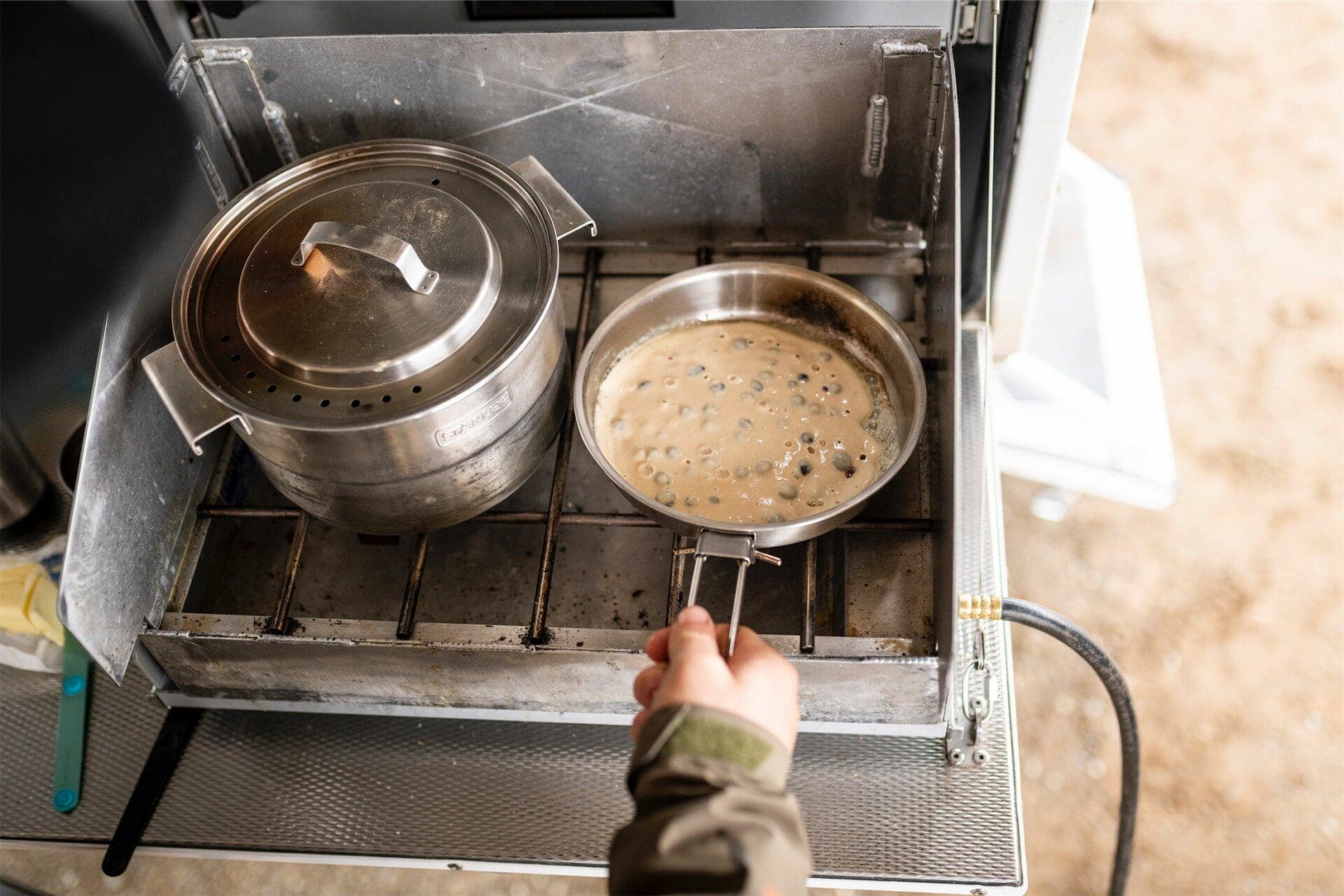
The beloved and iconic “Camp Stove” is an item no camp kitchen can do without!
Camp Stoves for Overland Builds
Along with a means of storing your food, you of course need a means of cooking it! Enter the iconic “Camp Stove.” A well-built two-burner stove will suffice for most of your culinary needs; however, how you choose to travel will determine which stove is best for the task.
For domestic adventuring, a propane or isobutane option is preferred. These stoves are easy to use, highly efficient, and can operate for days off of a large propane tank. The issue with these stoves arises when you decide to go overlanding and begin traveling into different countries where propane and isobutane is scarce and tank fittings and adapters vary widely. In these places, you may find yourself without a means of refueling your cook stove.
For such journeys, it is much better to buy a “duel-fuel” stove that will operate by means of liquid fuel, even unleaded gasoline if necessary. While cumbersome and messy to operate, these stoves provide much better assurance you’ll be able to fuel them while traveling abroad.
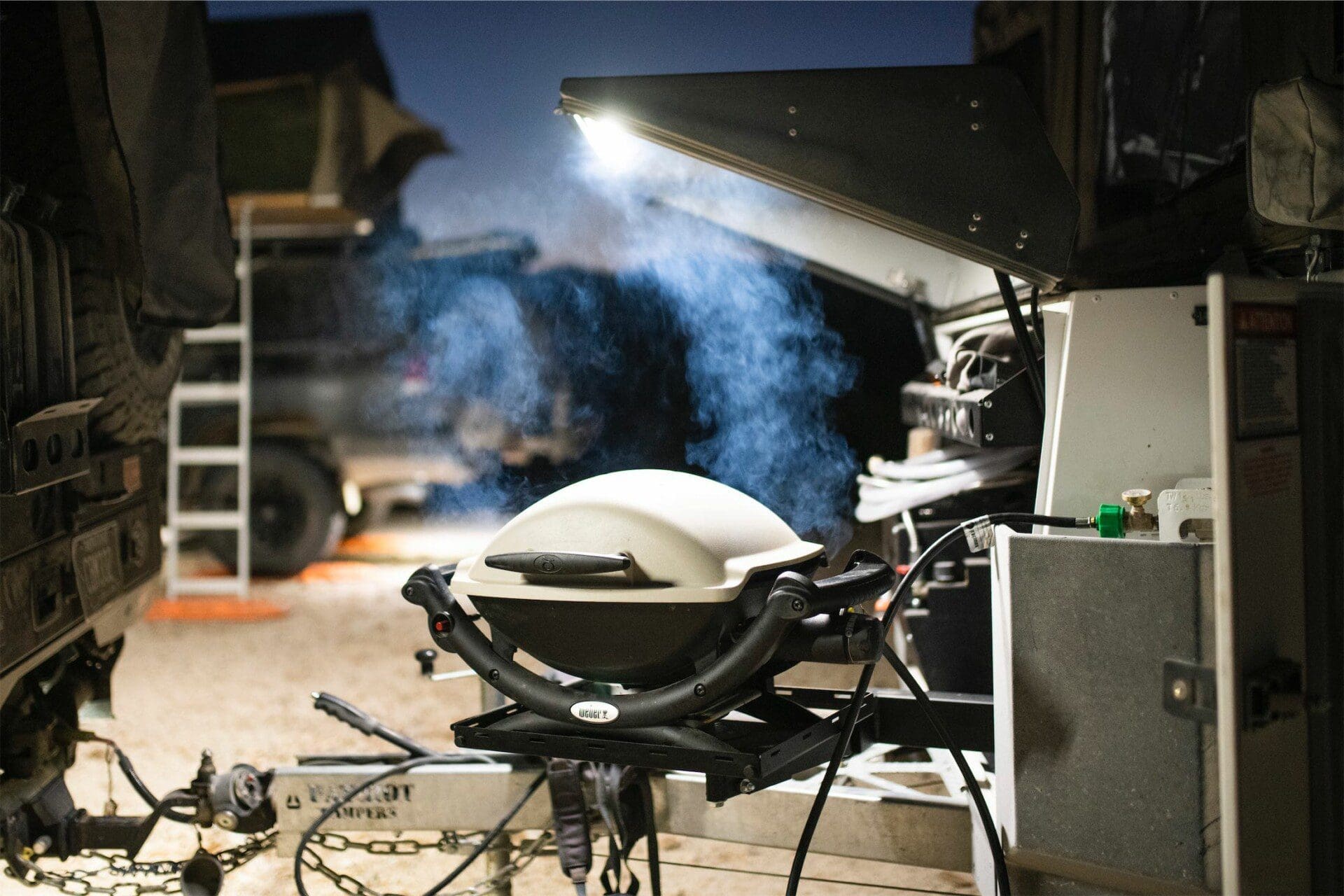
Even on our overland journeys, our propane-fueled Weber Grill is a team favorite, but it’s good practice to have a duel-fuel backup for when propane is scarce.
Another option are bio-fuel stoves which burn pellets and wood collected nearby. You could also potentially build a fire and cook off the coals with a portable grate. While fun to experiment with, neither option is efficient and both are largely impractical for the daily cooking requirements of overlanding. Don’t get us wrong, we love cooking over a fire when available. It’s a lot of fun and the food can be delicious! For daily travel, however, you will need an easy-to-use, reliable system.
Pro-Tip: Regardless of what two-burner stove system you decide to go with, pack along a simple isobutane unit with a couple of fuel canisters along with a selection of freeze-dried meals. That way you ensure a quick, nourishing meal if you run out of conventional supplies or have a failure with your larger stove.
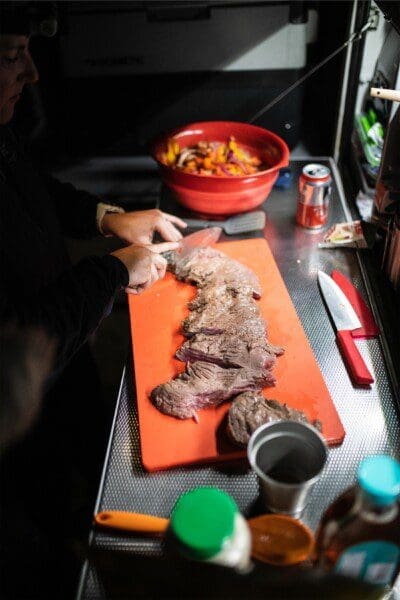
A quality assortment of cutlery and cutting boards will help all kinds of food prep, especially gourmet fare.
Pots, Pans, Utensils, and Such
Now let’s add the items you need to get cooking and eating: sturdy cookpot, skillet to go atop your stove (and maybe a couple of additional frying pans), a strainer, a cutting board, a high-quality but easy-to-pack set of cutlery, a spatula and set of tongs, a set of plates, bowls, and cups, and eating utensils. (We love our “Sporks”!)
We recommend going with the lightest materials you can find for these items while still maintaining quality. It is easy to head to the camping section of your local sporting goods store and wind up with a collection of these essentials that weighs in excess of 50lbs. Better to go check out a backpacking or whitewater rafting retailer to find galley items that are well-made but lightweight and easy to clean and stow.
Remember that you will need an approach to dishwashing. We recommend the use of a couple of plastic bins in which you can wash and rinse along with a synthetic towel to aid in drying and a bottle of non-toxic environmentally-friendly dish soap.
Pro-Tip: Collapsible water buckets are very useful for washing dishes and, along with space-saving stowage, can be used for filtering water and extinguishing campfires. For filtering water, scoop from your local water source (stream, lake, etc.), let any dirty particles settle to the bottom, then purify from a comfortable seated position.
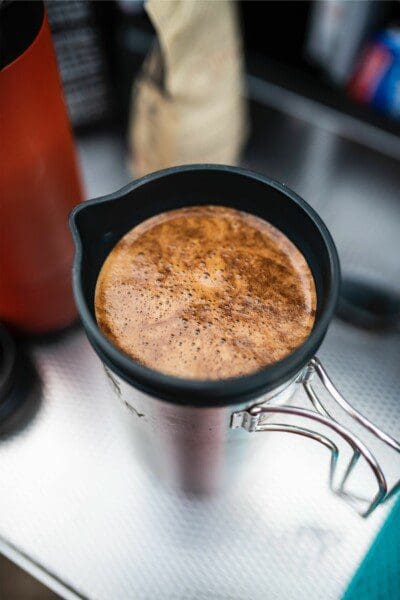
Good java in camp is something we love. Adding a brew kit to your overland galley that allows for a quick cup of coffee and easy clean up is a win in our book!
Java Anyone?
If you happen to love coffee like we do, we also recommend adding to your galley an easy and reliable approach to brewing coffee! We’re fans of the “French Press” method for large groups and a simple pour-over for single cups. Keep in mind easy set up and clean up in your approach and you’ll have a smile and a delicious cup of java every morning with a minimum of fuss and muss.
Pro-Tip: Nowadays you can buy pre-made, easily packable pour-overs from reputable roasters. These are perfect to stow away in your galley for those times when you forget to pack along your freshly ground coffee beans.😱
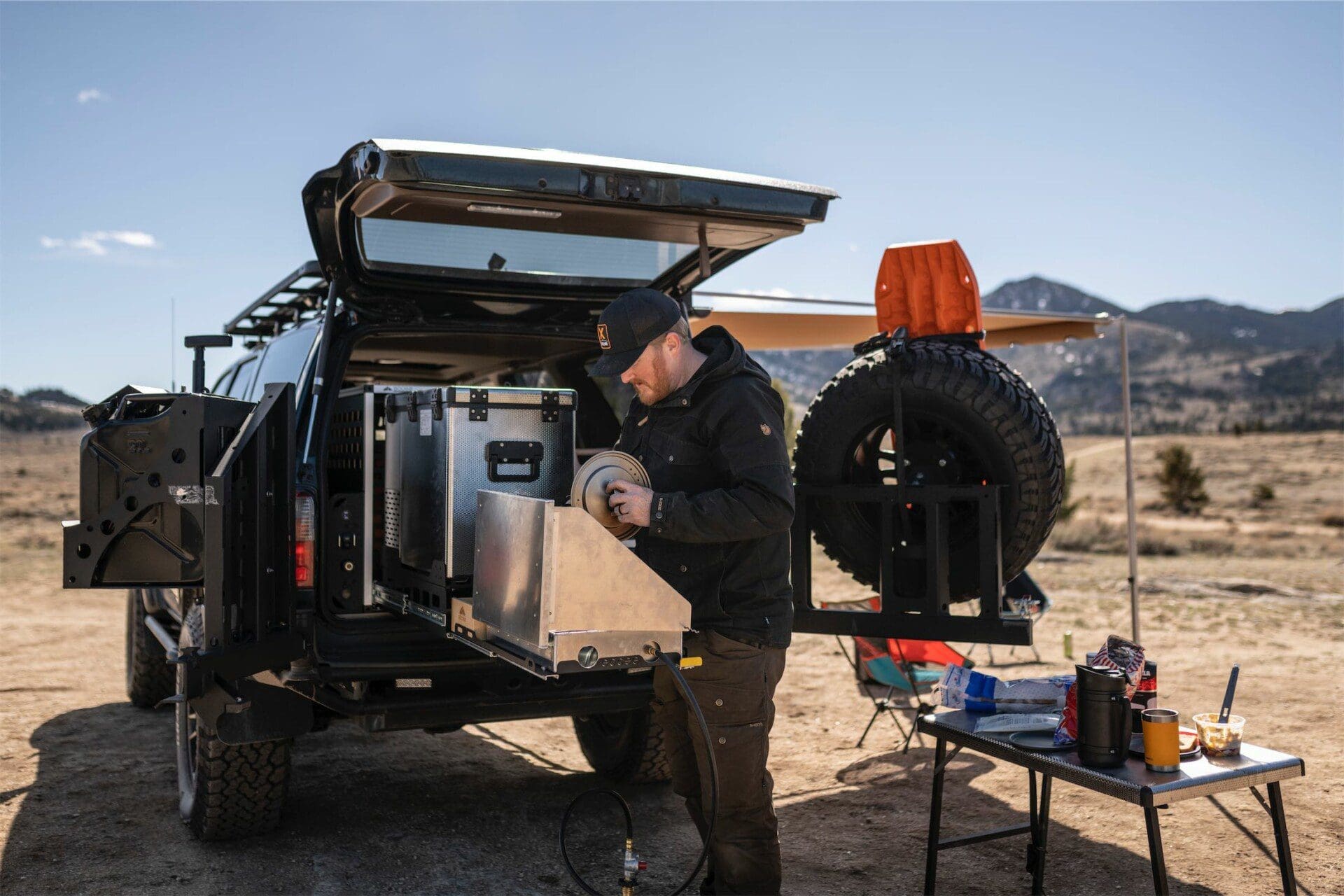
Camp tables should be lightweight, clean up quickly, and stow easily.
The Galley Table
Every overland galley needs a cooking surface, a place to put your stove, a cutting board, a bowl or platter, and perhaps some condiments and paper towels. The ultimate overanders’ cook table is lightweight, collapsible, simple to clean, and stows easily. Thankfully, there is a wide selection available to choose from, and a well-made product will last for years.
Our favorite is the Eezi-Awn K9 Camp Table which is designed to tuck under the usually wasted space beneath a roof rack.
The Awning
While not a necessity, a sizable awning that covers your outdoor cooking area makes cooking in foul weather much more pleasant. Whether seeking shade from harsh sun, or shelter from falling rain, an awning provides those cooking and eating with a protected, comfortable galley space.
The popular approach for most overlanders is to permanently attach an awning to their vehicle. However, to save money, you could always opt for a camp “wing” like those favored by whitewater rafting enthusiasts.
We have been loving the Eezi-Awn 2000 Series Awning or the Alu-Cab 270 Degree Shadow Awning!
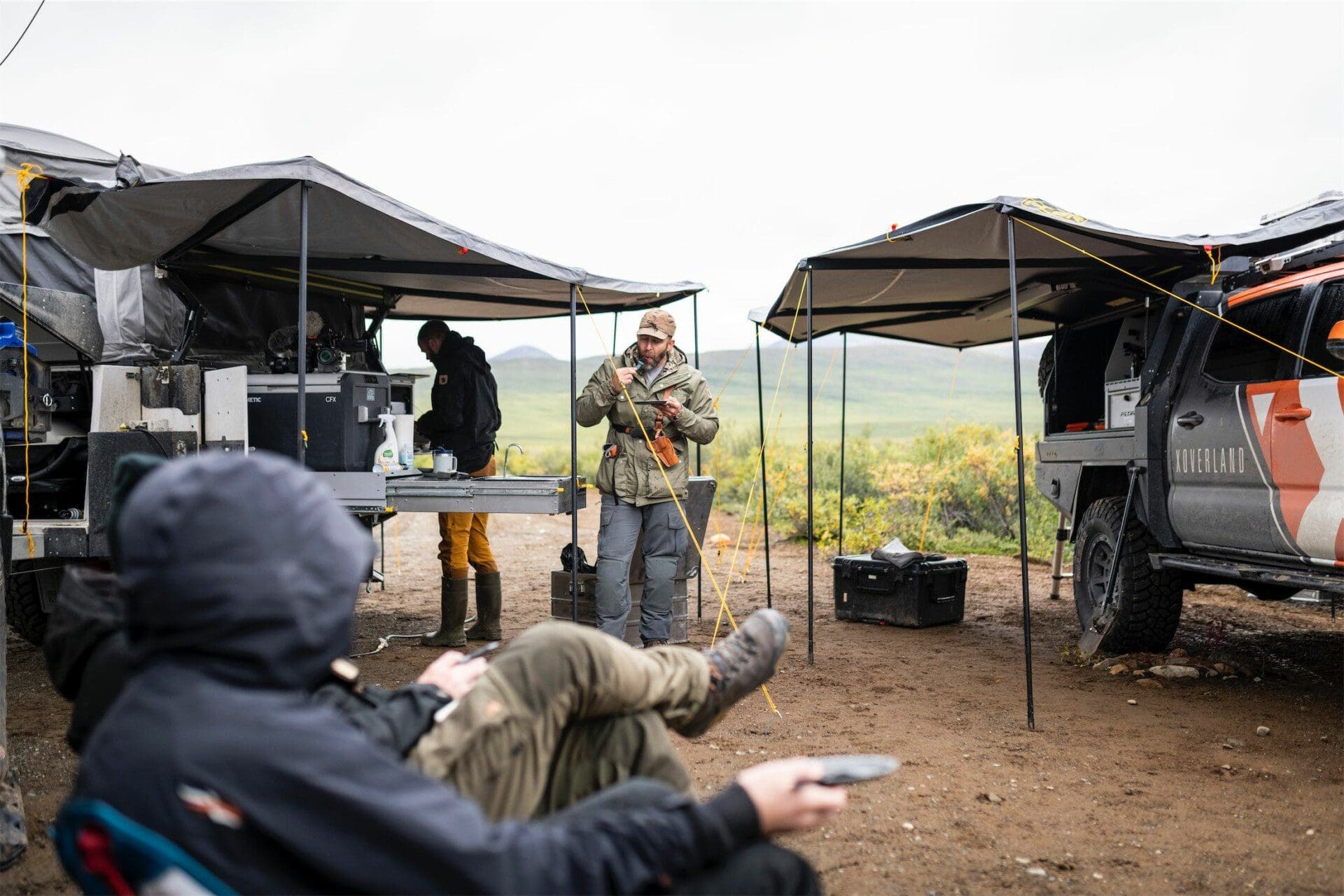
Though not a necessity, an awning provides a comfortable refuge from the elements for both cooking and eating.
Food Waste and Trash
In any kitchen, there will always be some food waste and trash to contend with. So it is with your overland galley. In managing your kitchen waste, consider that you need to have a means of storage that is leak-proof and will keep out animals and bugs like mice and flies.
Sturdy garbage bags ultimately encased in something like an Alubox or a Trasharoo is ideal. Be especially mindful of how you’re storing your food waste if you find yourself in designated “Bear Country.” Not only do you want to avoid having a bear in camp, but there are usually strict legal guidelines as to how food items can be stored in these areas. For more information, see our blog on this subject.
Final Pro-Tips for Your Camp Kitchen
- Practice with your overland galley in your backyard before you head to the backcountry! Like setting up your tent at home for the first time or doing a shakedown of your vehicle build on a local trail, experimenting with your camp kitchen from the comfort of your driveway will allow you to test all your galley equipment, refine your setup, and see what you’re missing before you head out!
- If you own a slide-in truck camper system like a Four Wheel Camper or a Scout and you’re thinking all of this is unnecessary because you already have an interior galley, we recommend that you consider the pleasure and increased cooking capabilities that come with adding an approach to an outdoor galley. With the exception of extremely cold conditions, when camping, outdoor cooking and eating is more pleasant for all involved!
- If you travel with a team of rigs or even with one other partner vehicle, consider the aspect of redundancy. It is very useful to have redundancy in some areas and excessive in others. See where you can save space and enhance your team capabilities by giving this concept some critical thought. For example, bringing two stoves along will improve the odds of there being a functioning stove every time you get to camp. However, a single dishwashing kit is all that is needed for the whole team.
- Be very careful about cooking in dry conditions and have a fire extinguisher at-the-ready around the kitchen. Where we’re headquartered in the American West, this is extremely important. Also, check with local authorities to learn about any current fire restrictions in the area you plan on camping that may affect your means of cooking.
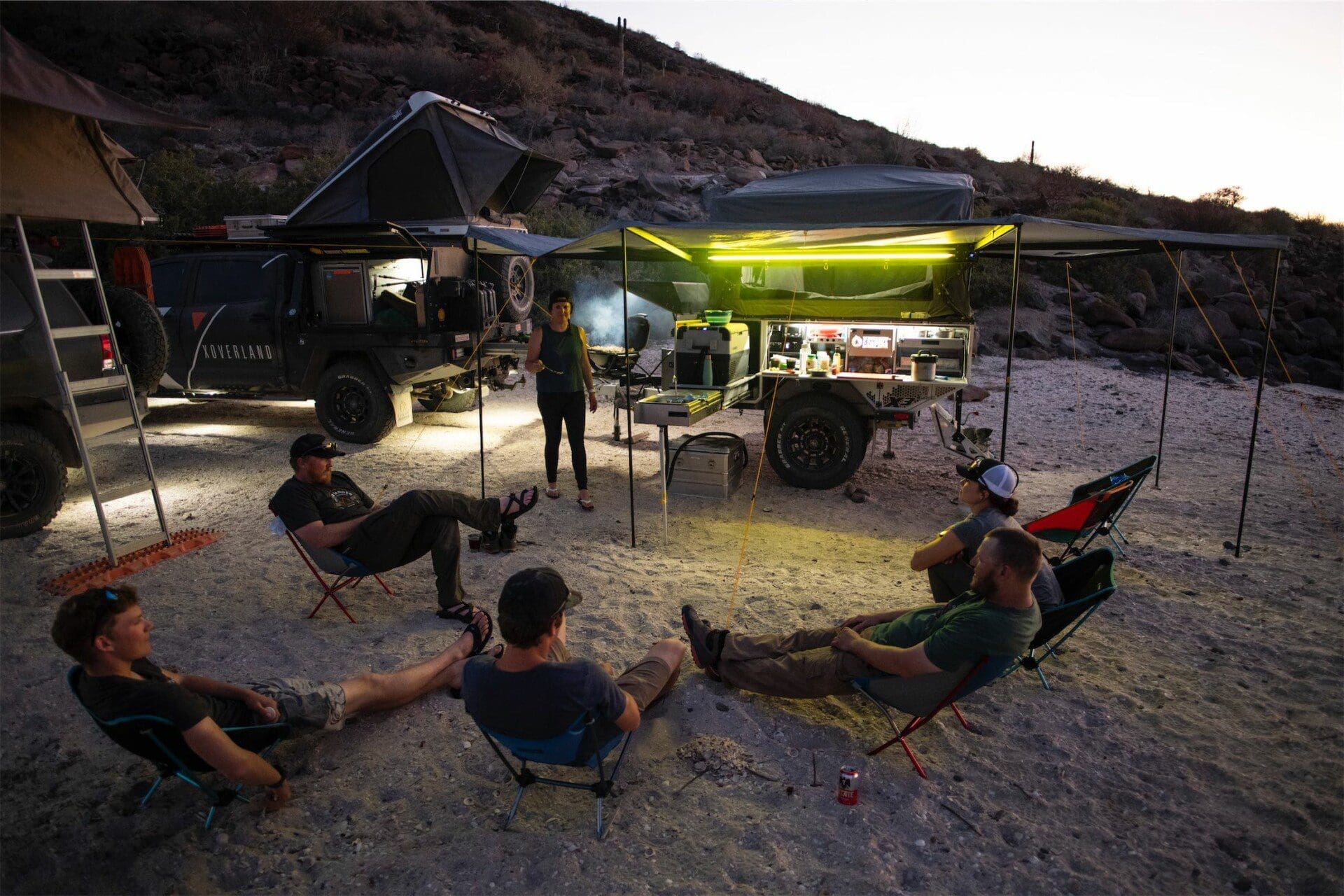
Ample lighting is very useful to have around your galley for cooking at night and makes for a festive atmosphere everyone can enjoy!
Bon Appetit!
Now that you’re well-equipped with a functional galley, it’s time to start cooking some memorable meals! (Be sure to check out our blog, “Camp Cooking for Overland Travelers”!) A grand galley provides an excellent means of socializing with other overlanders and locals you meet along your journey. You’ll be ready to invite a special guest to your camp dinner, make some new friends, share stories and learn more about what’s happening in the area you’re traveling. Great meals make for great times, and we all know that food tastes better when you’re overlanding!
